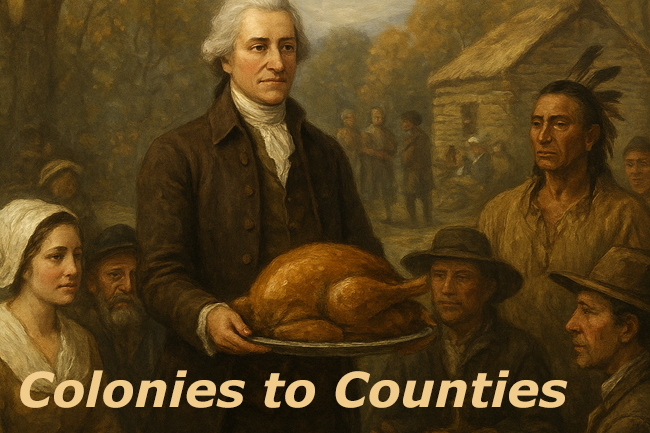From Colonies to Counties: Thanksgiving Through the Eyes of Tennessee’s Founders
 As Thanksgiving approaches, we’ve looked back at its colonial origins and its humble observance on the Appalachian frontier. But what did Thanksgiving mean to the men and women who shaped Tennessee itself? To understand that, we must step into the minds of the state’s founders—people like John Sevier, William Blount, and the early settlers who turned wilderness into community.
As Thanksgiving approaches, we’ve looked back at its colonial origins and its humble observance on the Appalachian frontier. But what did Thanksgiving mean to the men and women who shaped Tennessee itself? To understand that, we must step into the minds of the state’s founders—people like John Sevier, William Blount, and the early settlers who turned wilderness into community.
A Nation—and a State—in the Making
By the time Tennessee became a state in 1796, Thanksgiving had evolved from sporadic colonial observances into a more widely recognized tradition. Still, it wasn’t yet a national holiday. Instead, governors and local leaders would declare days of thanksgiving in response to military victories, bountiful harvests, or moments of civic unity.
In the newly formed State of Tennessee, gratitude was deeply tied to survival and sovereignty. The Revolutionary War was still fresh in memory. The State of Franklin experiment had failed. And the land that would become Jefferson County was still being surveyed, settled, and defended.
John Sevier’s Tennessee
John Sevier, Tennessee’s first governor and a hero of the Battle of Kings Mountain, embodied the rugged independence of the region. Though no records directly link Sevier to Thanksgiving proclamations, his leadership style—rooted in community, resilience, and faith—mirrored the values the holiday would come to represent.
In Sevier’s Tennessee, gratitude wasn’t reserved for a single day. It was expressed in the building of schools, the formation of counties, and the forging of civic institutions. Jefferson County, established in 1792, was part of that vision—a place where families could thrive, worship freely, and give thanks in their own way.
Thanksgiving as Civic Ritual
Throughout the early 1800s, Tennessee governors occasionally declared days of thanksgiving, often tied to peace treaties, harvests, or national milestones. These proclamations were printed in newspapers, read aloud in churches, and observed with prayer and fellowship.
In Jefferson County, such observances likely took place in log churches and family homes. The holiday was less about turkey and more about testimony—giving thanks for land, liberty, and the promise of a better future.
From Local to National
It wasn’t until President Abraham Lincoln’s 1863 proclamation that Thanksgiving became a national holiday. Even then, its observance varied widely across states and counties. In East Tennessee, where Unionist sentiment ran strong, Lincoln’s call for national unity through gratitude may have resonated more deeply than in other parts of the South.
Jefferson County, with its blend of frontier grit and civic pride, embraced Thanksgiving as both a personal and public ritual. It became a time to reflect on the sacrifices of the past and the hopes of the future.
A Legacy of Gratitude
Today, as we gather in homes across Jefferson County, we carry forward a tradition shaped not just by Pilgrims and presidents, but by pioneers and patriots. Thanksgiving is a thread that connects our county’s founding to its present—a reminder that gratitude is the foundation of community.










